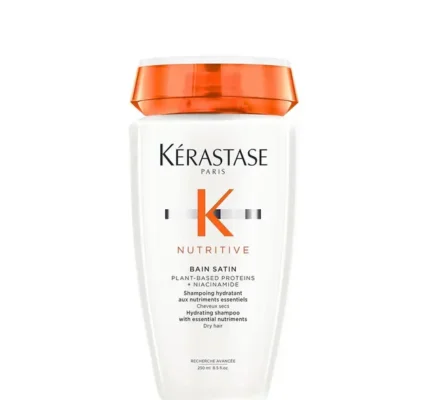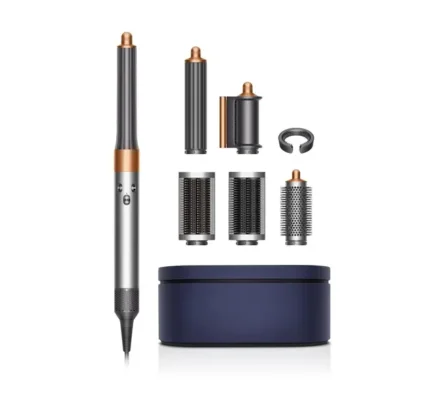Embracing your natural curly hair can transform your daily beauty routine. Understanding the best care techniques and products designed specifically for your curls will enhance their natural beauty. With the right approach, maintaining healthy and vibrant curly hair is simple. Dive into our expert tips and tricks to manage and style curly hair effectively.
Understanding Your Curl Type
Identifying your curl type is crucial for achieving those perfect curls you desire. Curls can range from loose waves to tight coils, and understanding your specific type will guide you in choosing the right products and techniques. Generally, curl types are categorized from 2A to 4C, where type 2 represents wavy hair, type 3 is curly, and type 4 is coily. The subcategories, ‘A,’ ‘B,’ and ‘C,’ differentiate the precise nature of the curls or coils, from a slight wave to a tight spiral.
Type 2 hair can seem the easiest to manage, with gentle waves that form a loose S shape. Type 2A has a fine texture and may not curl easily. Type 2B has more defined waves, possessing a slight frizz. Type 2C is the most defined in waves within this category, with occasional but noticeable ringlets.
Type 3 hair is distinctly curly. It forms well-defined curls, which can be voluminous. Type 3A curls are large and loose, prone to frizz, while Type 3B curls are tighter with a defined springy nature. Type 3C features densely packed tight curls, which are full-bodied and can be challenging to detangle.
Type 4 hair showcases the coily textures. Type 4A retains S-shaped coils, with a fine to thick texture. Type 4B presents sharp angles in less defined curls. Type 4C is characterized by tight, almost invisible coils, which demand careful handling to avoid breakage.
Understanding your specific curl pattern amidst this spectrum helps in choosing tailored products and routines that complement your natural hair texture. Thus, fostering healthier curls and making your hair care experience more effective and enjoyable.
Essential Curly Hair Products
Choosing the right hair products is essential for maintaining healthy and vibrant curls. One of the most important products is a high-quality shampoo and conditioner specifically formulated for curly hair. Look for products that are sulfate-free and enriched with moisturizing ingredients like coconut oil or shea butter. These ingredients help maintain the natural oils in your curls, preventing dryness and frizz.
Another key product is a leave-in conditioner. This helps provide extra moisture and protection, making your curls more manageable and less prone to tangling. Apply it to damp hair to enhance your curl pattern and prevent breakage.
Styling your curls also requires a good curl cream or gel. These products help define curls, reduce frizz, and add hold without making your hair crunchy. A curl-enhancing gel can be applied to wet hair right after washing to lock in moisture and shape.
Don’t forget to protect your curls from heat damage. Using a heat protectant spray before any thermal styling tools, like diffusers or curling irons, helps maintain hair health and prevent split ends. Lastly, a satin or silk pillowcase or a satin bonnet is great for avoiding friction while you sleep, which can cause frizz and tangled curls by morning. Prioritizing these essential products can significantly impact your curly hair care routine.
Washing and Drying Techniques for Curly Hair
When it comes to washing curly hair, it’s important to use techniques that minimize frizz and enhance your natural curls. Start with a sulfate-free shampoo that gently cleanses your scalp without stripping away essential moisture.
Apply conditioner liberally and detangle your curls with your fingers or a wide-tooth comb while it’s still in your hair. This step is crucial for preventing breakage and ensuring moisture gets locked in. Rinse with cool water to seal the hair cuticle and boost shine.
For drying, gently squeeze excess water from your hair using a soft microfiber towel or an old t-shirt. Avoid regular towels as they can cause frizz. Allow your curls to air dry if time permits or use a diffuser attachment on your hairdryer for quicker results. Set the dryer to a low heat setting to prevent heat damage.
While drying, scrunch your curls with your hands to encourage their natural shape. For additional volume, flip your head upside down or gently lift your roots with your fingers while diffusing.
To keep your curls looking fresh even between washing days, try a dry shampoo or a gentle refresher spray. This helps maintain volume and curl definition without overwashing.
Finish with a light serum or oil to lock in moisture and prevent frizz
. Select products that suit your specific curl pattern for best results.
Daily Curly Hair Care Routine
Having an effective daily curly hair care routine is crucial to maintain the health and appearance of your locks. Daily care doesn’t need to be complicated but should be consistent to ensure your curls are hydrated and defined. After waking up, start with a refreshing spray of water or a hydrating curl mist. This provides moisture and sets the stage for styling. Gently scrunch your curls to reactivate the products from the previous day.
Use a leave-in conditioner that’s suitable for your curl type to add moisture and manageability. Apply this to slightly damp hair to avoid frizz. A good practice is to section your hair, which ensures even distribution of the product and defines your curls better.
Touch-ups during the day can be done with a little bit of light oil on your fingertips to tame any flyaways. Avoid over-applying products as this can weigh down your curls and make them look greasy.
It’s essential to give your hair a break from daily washing unless it’s necessary for your scalp health. Focus on using lightweight, curl-friendly styling creams or gels that provide definition without stiffness. Ensure that your routine is adjustable based on your hair’s unique needs, the environment, and your activity level.
Bedtime Care
At night, protect your curls using a satin pillowcase or wrap your hair in a silk scarf. This helps prevent frizz and keeps your curls from tangling as you sleep. Consider applying a lightweight hair serum before bed if your curls need extra nourishment. With a little attention each day, achieving beautifully bouncy curls can become an effortless part of your daily life.
Curly Hair Styling Tips
Embrace your curls by mastering the art of styling. It’s crucial to work with your natural curl pattern rather than against it. Start by using the right products that complement your curl type. Apply a curl-enhancing mousse or gel while your hair is still damp to help define and hold your curls.
Use a wide-tooth comb or your fingers for detangling to avoid disrupting the curl pattern. While styling, consider parting your hair according to your curl pattern. This can make styling more manageable and help showcase the natural shape of your curls.
Diffusing and Scrunching
Drying is an important step in the styling process. Opt for a diffuser attachment on your blow dryer to gently dry your hair without creating frizz. Alternatively, allow your hair to air dry if you have time. While drying, scrunch your curls from the ends upwards. This helps in enhancing the natural curl definition. Avoid towel drying roughly as it can disturb the curl pattern and lead to frizz.
Finishing Touches
Once dried, give your curls a touch of shine and softness with a light serum or hair oil. Add volume by gently shaking your hair at the roots using your fingers. Avoid using too much product to prevent weighing down your curls.
Remember, the key to beautiful curly hair styling is patience and experimenting with techniques that work best for your unique curls. Have a couple of go-to styles that are quick and easy for those busy mornings. Regularly refine your technique to keep up with how your curls might change with the seasons or different hair lengths.
Dealing with Frizz in Curly Hair
Understand Why Frizz Occurs
Frizz in curly hair can be a common issue caused by lack of moisture, humidity, and even the wrong styling techniques. Curly strands are naturally more porous, making them susceptible to frizz.
Use the Right Products
Choosing the right anti-frizz products is crucial. Look for hydrating shampoos and conditioners without sulfates. Products that include natural oils such as argan or coconut are beneficial. They help to lock in moisture and reduce frizziness.
Moisturize Regularly
Consistent moisturizing is essential in frizz management. Consider using leave-in conditioners and deep conditioning masks weekly to keep your curls hydrated and silky.
Control Your Environment
Humidity can be a curly hair’s worst enemy. Use an anti-humidity spray to keep frizz at bay. If possible, dehumidifiers can help control the moisture in the air at home.
Gentle Drying Techniques
When drying your hair, use a microfiber towel or a soft cotton t-shirt instead of regular towels. This helps to prevent friction, which can increase frizz. Also, consider air-drying or using a diffuser at low settings.
Protective Hairstyles
Opt for protective hairstyles when the weather is against you. Braids, buns, or twist-outs can protect your hair from external elements, helping maintain your curl pattern and reducing frizz.
By understanding the causes and implementing these strategies, you can reduce frizz and enhance your natural curls, helping you to achieve perfect curls every day.
Curly Hair Myths Debunked
Myth 1: Curly Hair Is Always Dry
It’s commonly believed that curly hair is naturally dry, but this isn’t always the case. While curls require moisture to maintain shape and health, they aren’t inherently dry. Regular conditioning and proper care can keep curls hydrated and vibrant.
Myth 2: You Can’t Brush Curly Hair
Many think brushing curly hair is a recipe for disaster. However, using a wide-toothed comb or a specially designed brush on wet hair with conditioner can help detangle without frizz.
Myth 3: Curls Need Daily Washing
This myth often leads to over-washing, stripping much-needed natural oils. Curly hair thrives with less frequent washes, allowing oils to nourish strands. Opt for a co-wash or a sulfate-free shampoo every few days.
Myth 4: Curly Hair Grows Slower
Curls may seem to grow slower due to their springy nature, which masks actual growth length. Hair grows at the same rate regardless of texture, and proper care can maximize growth retention.
Myth 5: Cutting Curly Hair Makes It Curlier
Curliness depends on hair structure, not the cut. A good trim can enhance the curl pattern by removing heavy ends that weigh curls down but doesn’t alter the natural curliness.
Myth 6: All Curls Are the Same
No two curls are alike. Understanding your unique curl type helps in selecting the appropriate products and techniques. From loose waves to tight spirals, acknowledge and cater to your specific pattern for optimal care and styling.
Long-Term Care for Healthy Curly Hair
Maintaining healthy curls over the long term requires consistent care and attention to detail. It’s crucial to moisturize regularly as curly hair tends to be drier due to its structure, which makes it harder for natural oils to travel down the hair shaft. Incorporate deep conditioning treatments into your routine at least once a week to nourish your curls.
Avoid exposure to excessive heat as much as possible. When heat styling is necessary, always apply a heat protectant to shield the hair from damage. Embrace protective hairstyles that minimize breakage and preserve curls, especially while sleeping or during harsh weather conditions. Consider using a satin or silk pillowcase to reduce friction and help your curls maintain their shape.
Trim your hair regularly to get rid of split ends and prevent further damage. This promotes healthy growth and keeps your curls bouncy and vibrant. A balanced diet rich in vitamins and minerals also contributes to the health of your hair. Foods high in omega-3 fatty acids, like salmon and walnuts, can help reduce dryness and frizz.
Hydration is key for long-term care. Drink ample water and use a leave-in conditioner or hair oil to lock in moisture. Ensure that you are using products free from harsh chemicals that can strip your hair of its natural oils.
Pay attention to the needs of your specific curl type. This personalized care approach can greatly enhance your hair’s longevity and quality. Be patient and gentle with your hair, and over time, your curls will become healthier and more manageable.



